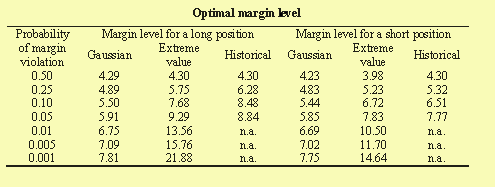

Along with price limits and capital requirements, the margin mechanism ensures the integrity of futures markets. Initial deposits and subsequent variation margin payments are designed to guarantee that investors will perform according to the terms of the contract. The risk of default however cannot be completely eliminated since margin deposits cannot fully cover all adverse price changes. Default occurs when a trader reneges on the contract obligations. Such a situation arises when there is a large futures price change such that the investor's margin account is wiped out, the investor receives a margin call but does not meet this margin call. Setting a high margin level thus reduces default risk. However, if the margin level is set too high, then the futures market will be less attractive for investors. Since maintaining funds on margin deposits amounts to a transaction cost on traders, an increase in margin requirements can be expected to decrease trading activity and then brokers' commissions.
The contribution of this article is to propose a new method for setting the margin level in futures markets based on extreme value theory. This statistical theory gives interesting results on the distribution of extreme values of a random process. Extreme movements are central to the margin-setting problem since only a large price variation may cause brokers to incur losses. Extreme value theory is used to compute the margin level for a given probability value of margin violation desired by margin committees or brokers.
The table below gives the optimal margin level (as percentages of the nominal amount of the position) for a given probability of margin violation for speculative long and short positions in the silver futures contract traded on COMEX. Three distributions are used to compute the margin levels: the Gaussian distribution for futures price changes, the asymptotic distribution of extreme futures price changes, and the historical distribution of observed futures price changes.

The remarkable result is that for conservative values of the probability of margin violation, the appropriate margin levels obtained under the assumption of normality are well below those obtained with the extreme value distribution. By using normality, the appropriate margin level is largely underestimated.
The extreme value distribution seems to fit well the behavior of extremes since the margin levels given by the Fréchet distribution are similar to the level observed during the period (historical distribution). For smaller probabilities, the scarcity of very large extremes does not allow a comparison since results given by the non-parametric historical method are not available. As the extreme value method is parametric, it does not present such a disadvantage.
 Return to the publication list
Return to the publication list
The asymptotic distribution of extreme stock market returns
From VaR to stress testing : the extreme value approach